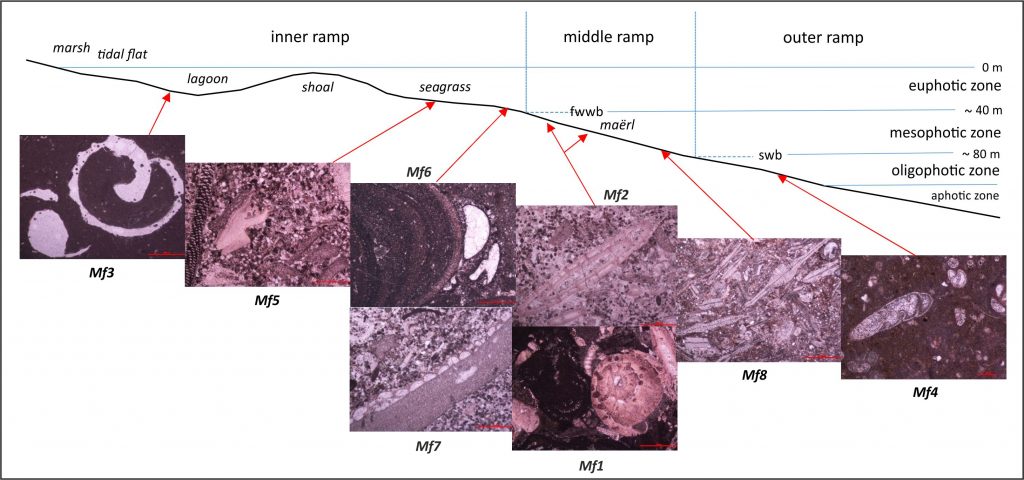Home » Posts tagged 'Lutetian-Bartonian'
Tag Archives: Lutetian-Bartonian
Recent Posts
- Cenozoic tectono-sedimentary evolution of the onshore-offshore Tunisian Tell: Implications for oil-gas research
- 3D modeling of the stratigraphic and structural architecture of the Crotone basin (southern Italiy) using machie learning with Python
- 3D Visualization of geological structures using Python: the case study of the Palomeque sheets
- Field trip in Morocco: Searching for the Nummulites
- Small scale RT cycles in Prebetic Lower-Middle Eocene (Alicante)
Archives
- May 2024
- April 2024
- February 2024
- January 2024
- December 2023
- November 2023
- October 2023
- September 2023
- June 2023
- April 2023
- March 2023
- September 2022
- August 2022
- June 2022
- April 2022
- January 2022
- December 2021
- November 2021
- September 2021
- February 2021
- December 2020
- November 2020
- October 2020
- September 2020
- June 2020
- May 2020
- January 2020
- December 2019
- November 2019
- October 2019
- September 2019
- August 2019
- July 2019
- June 2019
Categories
- basin analysis
- Betics
- Campo de Gibraltar
- Cenozoic
- Eocene
- foreland basin
- geodynamic evolution
- geodynamic evoluton
- Geological Heritage
- Iberian range
- Italy
- Morocco
- oligocene
- paleogeography
- Paleozoic
- PID2020-114381GB-I00
- Rif
- simulation
- Sin categoría
- Team
- Tectonosedimentary model
- Tethys
- westernmost Tethys
Middle Eocene carbonate platforms of the westernmost Tethys
A study of the paleoenvironmental evolution of the middle Eocene platforms recognized in the westernmost Tethys has been carried out in the well exposed middle Eocene succession from Sierra Espuña-Mula basin (Betic Cordillera, S Spain). Eight microfacies (Mf1 to Mf8) have been recognized, based mainly on fossil assemblages (principally larger benthic foraminifera), and rock texture and fabric.

The fossiliferous assemblage can be asigned to the ‘subtropical’ heterozoan association or to the low-latitude ‘foralgal facies’ , which are dominated by non-framework building, light-dependent biota such as perforate larger benthic foraminifera, coralline algae, and sometimes green algae and solitary corals. Larger benthic foraminifer assemblages, corresponding from euphotic to oligophotic conditions and the large surface showed, suggest a progressive marine ramp under essentially oligotrophic conditions. Eventually, supply of detrital sediments from the continent and/or upwelling currents increasse the nutrients of marine waters. Comparision with other Tethyan sectors allows stating that coral-reef buildups (z-corals) were widespread on shallow platforms of the central and eastern Tethys Ocean, but that these were neither of great dimensions nor dominant because of the much more dominant presence of larger benthic foraminifera. Moreover, these coral constructions were completely absents in the westernmost Tethys. The dominance of larger benthic foraminifera and the absence of z-corals in the westernmost Tethys is explained by particular paleogeographic features due to the occurrence of a narrow and deep oceanic branch (i.e., the Maghrebian Flysch Basin) connecting the Tethys with the Atlantic Ocean.

The various issues regarding the morphological characters and evolution of larger benthic foraminifera in the study area, such as sizes of tests, specific diversity and/or intraspecific variability, number of appearances and last occurrences during the middle Eocene are analyzed and compared with those appearing in other Tethyan sectors. In addition, the early to late Bartonian boundary is recognized in the study area as critical for the biological change as in other shallow-marine environments along the Tethys margins.
Recent Comments